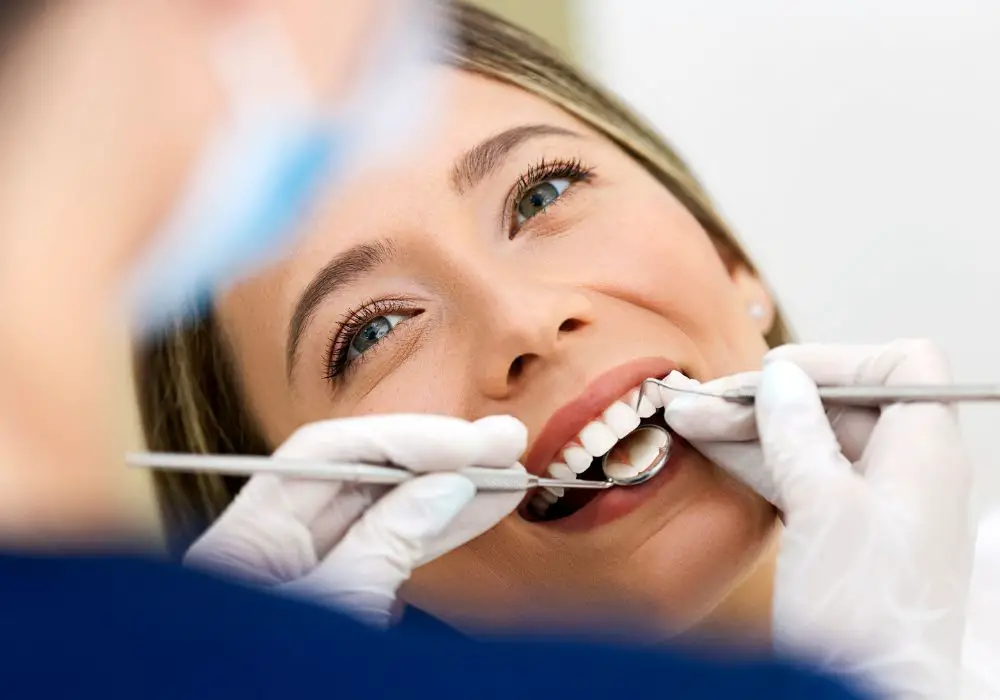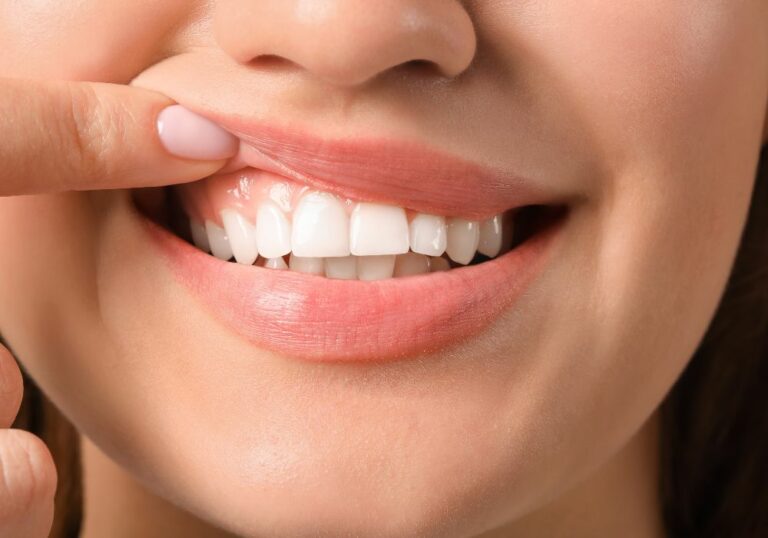Porcelain teeth, also known as dental veneers or laminates, are a popular cosmetic dental treatment that can restore chipped, worn down, misshapen, or discolored teeth. Porcelain veneers are custom-made, thin shells of ceramic material that are bonded to the front surface of teeth. They create a natural, bright white smile. However, porcelain veneers don’t come cheap, with the average cost ranging from $925 to $2,500 per tooth.
There are several reasons why porcelain veneers are so expensive.
Materials and Labor

Porcelain veneers are more expensive than other dental procedures mainly due to the materials, high-level of craftsmanship, and time required to create a custom-made restoration that looks and feels natural.
Porcelain Material
Dental veneers are made from dental porcelain, a glass-like ceramic material known for its durability, lifelike translucency, and ability to mimic the light reflectivity of natural teeth. High-quality dental porcelain that meets functional and aesthetic standards is costly to produce and purchase in bulk.
Custom Fabrication
Porcelain veneers are not prefabricated “one-size fits all” solutions. They are individually crafted and designed for each patient through a labor-intensive process requiring:
- Impressions: Molds are taken of the prepared teeth to create plaster models that replica the teeth and surrounding structures. This step is necessary to create an accurate veneer blueprint.
- Wax-up: A dental technician sculpts wax veneer templates over the plaster model to the precise shape, contour, and size required.
- Try-in: The wax veneer “mockups” are evaluated on the patient’s teeth to ensure proper fit, shape, and color. Adjustments are made as needed.
- Fabrication: The final, approved wax veneer is used to create a ceramic veneer replica that is meticulously layered, fired, and glazed to match the adjacent teeth.
This artistic, skill-intensive process takes several days to weeks to complete by a trained dental ceramist. The labor costs are high.
Dentist Fees
Applying porcelain veneers is also technique-sensitive and can take several dental visits to complete. It requires the expertise of an experienced cosmetic dentist who charges more for their time and skill. Steps include:
- Tooth preparation: Teeth are conservatively shaped to accommodate veneer thickness
- Temporaries: Temporary veneers provided for patient use during the fabrication process
- Bonding: Veneers are tried in, adjusted as needed, then bonded to teeth with light-activated resin cement for a secure attachment
With all the chairside time, materials, and expertise required, dentist fees of $500 – $1,500 per tooth are typical.
Length of Service

While the upfront cost is high, porcelain veneers are meant to last. With proper oral care, they can serve cosmetic and functional needs for 10-30 years, making them a sound long-term investment.
Factors that determine veneer longevity include:
- Patient habits: Avoiding tooth grinding and proper brushing help prevent fractures and debonding.
- Ongoing dental care: Regular cleanings and checkups monitor for issues.
- Initial veneer quality: Well-made veneers resist staining, fractures, and damage.
Replacing failed veneers after 5-10 years can cost the same or more than the originals. Going with a durable laboratory-crafted material like porcelain helps avoid frequent re-dos and added expense.
Enhanced Dental Office Technologies
Cosmetic and general dentistry has progressed alongside advancements in technology. Dental offices invest in digital tools and equipment that raise standard of care. Some examples include:
- Digital impression scanners: More accurate than traditional impressions for a better veneer fit.
- Advanced imaging: Provides detailed 3D views of oral structures to aid planning.
- CAD/CAM milling: Allows in-office design and milling of veneers in fewer visits.
- Dental lasers: Enable quicker, gentler tooth preparation.
While digital dentistry can streamline the process, these next-gen technologies have a hefty price tag that gets transferred to patients.
Aesthetic and Functional Benefits

Despite the high cost, porcelain veneers remain popular for their ability to:
- Reshape, repair, and rejuvenate smile appearance
- Boost confidence with whiter, straighter, more youthful-looking teeth
- Reinforce and protect damaged or weakened tooth structure
- Correct mild orthodontic imperfections like gaps or crookedness
- Improve the chewing surface and bite
The combination of significant aesthetic and functional improvements porcelain veneers provide is difficult to achieve with other treatments. Patients are often willing to pay more for the complete smile transformation veneers enable.
Cost Breakdown
Here is a typical cost breakdown for a single porcelain veneer from start to finish:
| Procedure | Cost |
|---|---|
| Initial exam and records | $200 – $300 |
| Tooth preparation | $150 – $250 per tooth |
| Temporary veneer | $100 – $250 per tooth |
| Impressions | $75 – $200 per arch |
| Wax try-in | $100 – $250 per tooth |
| Porcelain veneer fabrication | $500 – $1,200 per veneer |
| Bonding | $150 – $300 per tooth |
| Total Cost | $1,000 – $2,500 per veneer |
As shown above, the bulk of the cost lies in the artistic fabrication process. The billowy range allows for differences in materials used, patient needs, dentist fees, and regional dental costs.
Are the costs worth it?
Only patients can decide if porcelain veneers are a worthy investment for their smile. On average, patients can expect to spend $5,000 – $25,000 for a full set of 10 to 14 veneers. Those with extensive cosmetic needs, such as closing gaps or lightening stained teeth, tend towards the higher end.
The costs may seem exorbitant upfront, but porcelain veneers are meant to be a permanent or long-lasting solution. Those who obtain a glowing, naturally beautiful smile with enhanced dental structure often report feeling the boost in self-confidence and quality of life makes the investment worthwhile.
Regular dental checkups and excellent oral hygiene practices will help porcelain veneers last for many years or decades to come. But for those who aren’t yet ready to commit, lower cost options like teeth whitening, bonding, or orthodontics may be able to achieve targeted improvements more affordably.
Frequently Asked Questions
Why are porcelain veneers better than cheaper veneer alternatives?
Porcelain is considered the gold standard material for veneers due to its durability, stain-resistance, and ability to mimic natural tooth properties like light transmission and fluorescence. While cheaper resin-based veneer options cost less upfront, they tend to stain, chip, and need replacement much sooner. Well-crafted porcelain veneers have greater longevity – up to 30 years with proper care.
Can dental insurance lower the cost of porcelain veneers?
Unfortunately, as a purely elective, cosmetic procedure, porcelain veneers are not covered under most standard dental insurance plans. However, some plans may provide a small discount or coverage for a portion of the related dental care, like the tooth preparation. Treatment not covered would need to be paid out-of-pocket by the patient.
Are payment plans available for porcelain veneers?
Many dentists offer flexible payment options to break the total cost of porcelain veneers into more affordable monthly installments. Third party medical financing companies like CareCredit also offer 12, 24, or 36 month payment plans with no to low interest for qualified applicants. Payment plans make this significant, but transformative investment accessible to more patients.
Is it worth traveling abroad to get cheaper porcelain veneers?
Some patients travel to countries like Mexico, Costa Rica, or Thailand to access porcelain veneers at a lower price point. However, quality standards and regulations abroad vary greatly. Opting for unqualified dentists and labs to save money can result in poorly-fitted veneers prone to problems. Dental tourism also makes follow-up care and warranty support difficult or costly. The smart option is choosing an experienced dentist with a proven record of quality, long-lasting veneers, even if that requires paying more.
Can my old amalgam fillings affect the cost of veneers?
It is often recommended to replace old amalgam fillings with composite resin prior to getting veneers. Amalgam stained dark around the veneer margins can show through and impact the aesthetic outcome. Replacing them adds to the overall cost. Some patients choose to keep amalgam fillings that are intact below the veneer surface to save on additional replacement fees.







